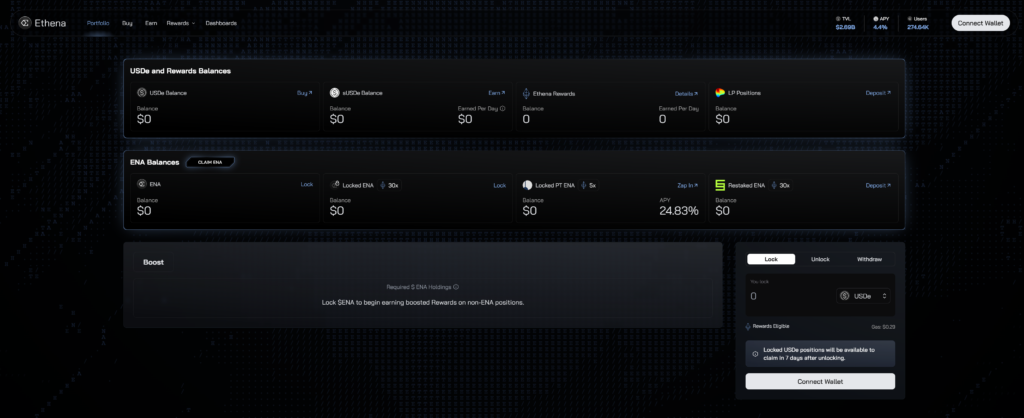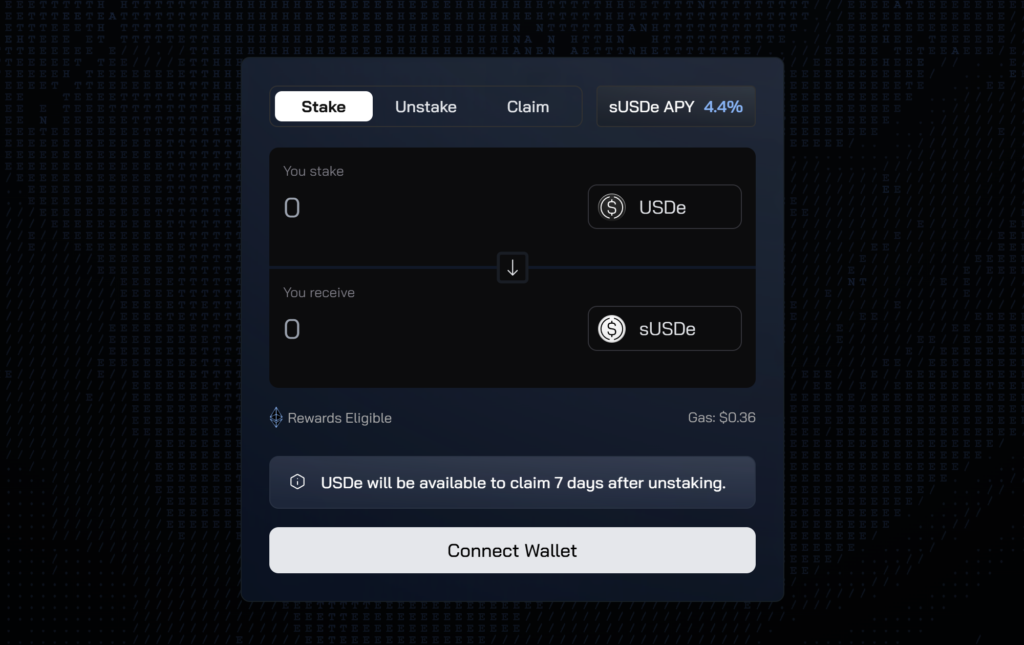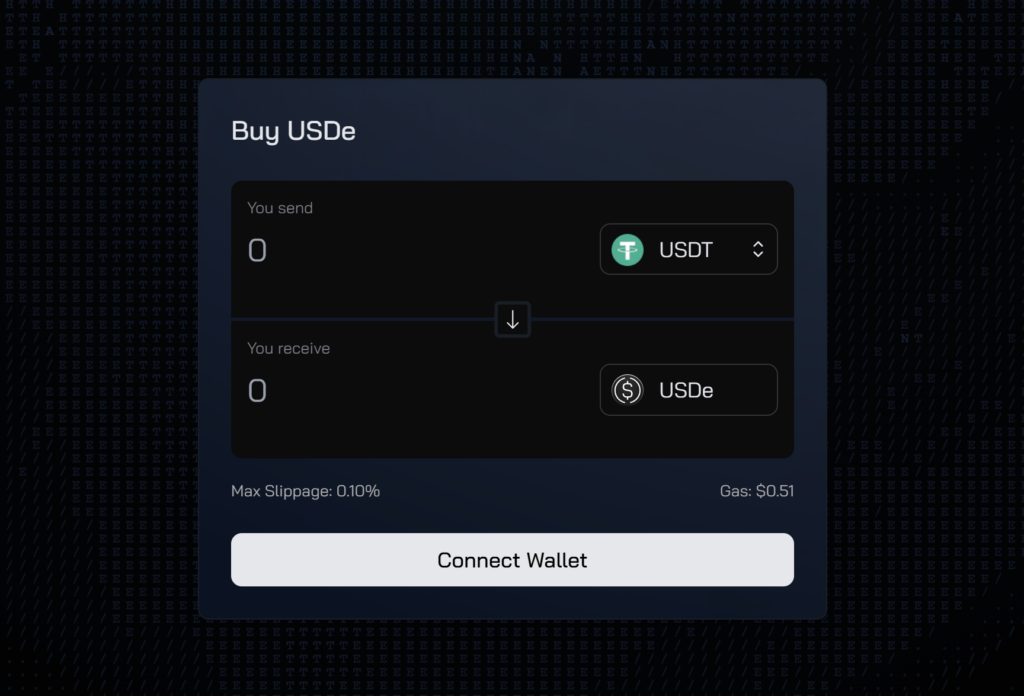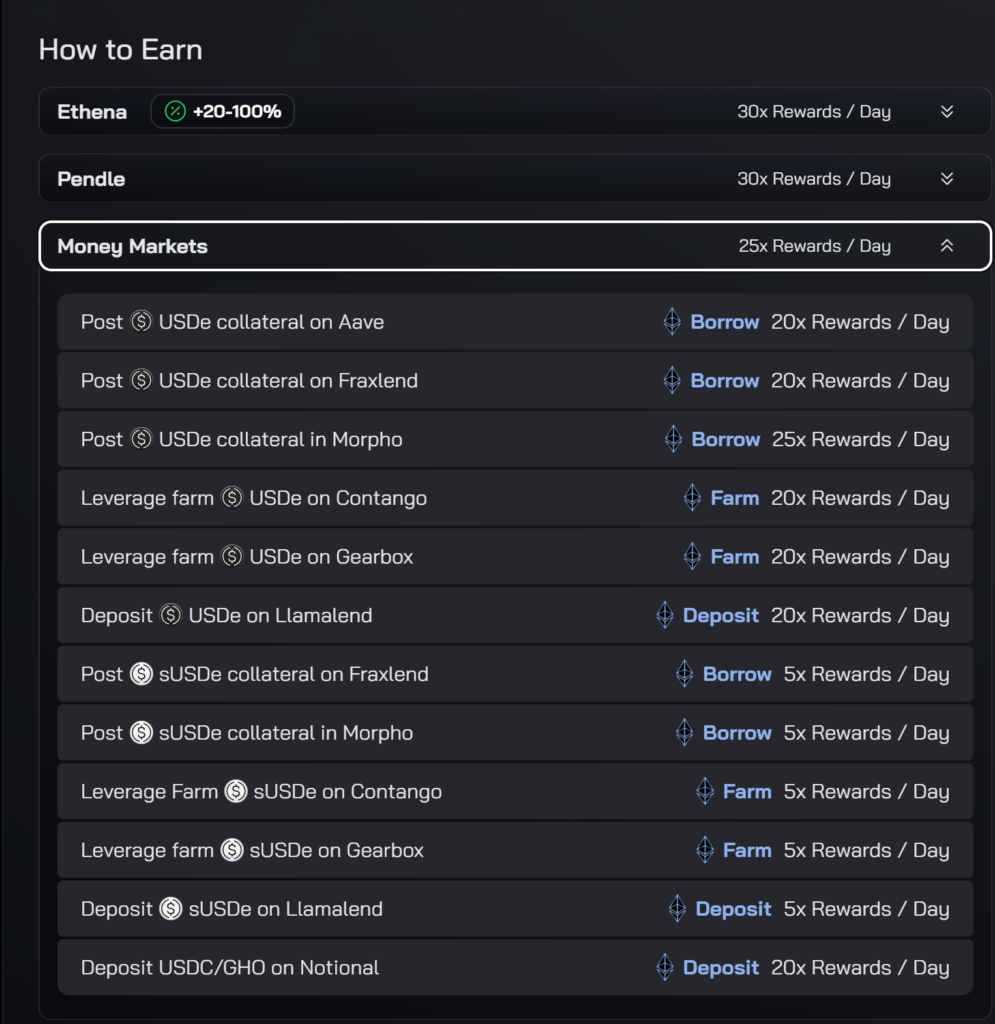Ethena is a groundbreaking synthetic dollar protocol built on Ethereum that uses the concept of funding rates to collect yield.
If you are not aware of the concept of funding rates, it’s a payment mechanism that aligns the futures market price with the index price, typically in perpetuals trading markets.
When the funding rate is positive, users who have long positions pay a funding fee to users who have short positions. When the funding rate is negative, users who have short positions pay a fee to users who have long positions.
At the core of Ethena lies USDe, a synthetic dollar that is fully collateralized by crypto assets and delta-hedged against price fluctuations.
Unlike conventional stablecoins pegged to fiat currencies, USDe derives its stability from an innovative mechanism that offsets the price change risk of the underlying collateral through corresponding short futures positions.
This unique approach enables Ethena to offer a censorship-resistant, scalable, and stable form of digital money, free to compose throughout DeFi.

Benefits of Ethena for Yield
One of the most compelling aspects of Ethena is its ability to generate relatively high and often sustainable yields, which can be passed on to users who stake their USDe tokens.
This yield is derived from two primary sources: staking Ethereum to receive consensus and execution layer rewards, and the funding and basis spread from the delta hedging derivatives positions on the underlying positions.
Users who stake USDe receive a proportionate share of the generated yield, effectively transforming their digital assets into a yield-bearing instrument.

When you stake USDe, it is transformed to sUSDe, which is eligible for staking rewards. Investors simply hold sUSDe to receive yield, which can be realised by unstaking sUSDe into USDe, and benefiting from the more favourable exchange rate.
The value of sUSDe is expected to slowly increase in value as protocol yield is transferred into the Staking smart contract
How USDe and Ethena Works
At the heart of Ethena’s functionality lies the delta hedging mechanism, which ensures the stability of USDe by offsetting the price change risk of the collateral assets. Here’s a simplified breakdown of how it works:
- Users deposit their crypto collateral, such as staked Ethereum (stETH), into the Ethena protocol
- Ethena mints USDe tokens representing the value of the deposited collateral
- Simultaneously, Ethena opens corresponding short perpetual positions on derivatives exchanges, with a notional value equal to the minted USDe.
- The collateral assets are held in secure, off-exchange custody solutions, ensuring transparency and minimizing counterparty risk.
- As the value of the collateral assets fluctuates, the profits or losses from the short perpetual positions offset these changes, maintaining the stability of the USDe token.
This delta-neutral approach ensures that the USD value of the collateral remains relatively stable, regardless of market conditions.
Users can then freely use their USDe tokens throughout the DeFi ecosystem, confident in their stability and censorship resistance.
How Ethena works behind the scenes
Ethena’s technical design is a masterpiece of innovation, combining on-chain and off-chain components to create a robust and scalable solution.
The on-chain components include smart contracts that govern the minting, redeeming, staking, and unstaking of USDe tokens, while the off-chain components manage the delta hedging positions with respect to the deposited collateral.
To access the liquidity of centralized exchanges while maintaining the principles of decentralization, Ethena utilizes “Off-Exchange Settlement” (OES) providers. These institutional-grade providers custody the collateral assets and enable Ethena to delegate or undelegate assets to and from centralized exchanges without transferring custody.
This approach mitigates the risk of exchange failures while ensuring transparency and permissionless access to the protocol.
How to Mint USDe
Ethena provides two primary methods for minting USDe: through the user interface (UI) or via the API. The process varies slightly for whitelisted approved participant market makers and non-whitelisted users.
For Whitelisted Approved Participant Market Makers:
Ethena provides two primary methods for minting USDe: through the user interface (UI) or via the API. The process varies slightly for whitelisted approved participant market makers and non-whitelisted users.
For Whitelisted Approved Participant Market Makers:
- Initiate Minting Process: Users can request to mint USDe through the Ethena dApp interface. They select a backing asset, such as stETH, enter the amount they wish to use for minting, and review the corresponding amount of USDe they will receive.
- Sign Transaction: If the user agrees with the terms, they can click the “Mint” button, which prompts their connected wallet to sign an EIP712-style signature. This signature specifies the backing asset, the backing amount, and the USDe amount they will receive.
- Validation and Submission: After the user signs the transaction with their wallet, Ethena validates the request and submits the transaction to the blockchain.
- Atomic Swap: Upon successful confirmation of the transaction, the user’s chosen backing asset (e.g., stETH) is atomically swapped for the agreed amount of USDe.
For Non-Whitelisted Users:
Non-whitelisted users can exchange stablecoins for USDe by accessing external liquidity pools through the Ethena dApp interface.
For example, using the Buy tab on the UI allows investors to swap stablecoins like USDT, USDC, DAI, GHO and crvUSD to USDe.

This exchange is MEV-protected, the transaction is routed using through CowSwap to various on-chain liquidity pools in exchange for USDe.
It also abstracts away the complexity for non-whitelisted users to receive USDe. It also creates small imbalances in the on-chain AMM pools, triggering opportunities for market makers to proceed with the minting workflow outlined above.
By offering these two methods, Ethena caters to both whitelisted market makers and regular users, providing a seamless and user-friendly experience for minting the USDe token.
Earn yield by yield farming with USDe
USDe can be used to earn yield beyond staking for rewards. For example, Ethena offers a wide range of yield farming opportunities with USDe as a liquidity provider token.
There are a wide range of yield farming opportunities available for USDe, including on money markets like Aave, holding the yield token or LP on Pendle, deposting USDe collateral in yield farming vaults, or even restaking the token on protocols like Mellow.
In these farming opportunities, rewards are paid out in ENA tokens, based on their performance during the season.
Check out the Ethena Points campaign FAQ for more information.

Risks of Ethena
While Ethena represents a significant advancement in the realm of decentralized finance, it is essential to acknowledge and understand the associated risks. Some of the key risks include:
- Smart Contract Risk: Like any blockchain-based protocol, Ethena is susceptible to potential vulnerabilities or bugs in its smart contracts, which could lead to unintended consequences or exploitation.
- External Platform Risk: Ethena relies on external platforms, such as centralized exchanges and OES providers, introducing potential risks stemming from their operations or security breaches.
- Liquidity Risk: Insufficient liquidity in the underlying derivatives markets could impact Ethena’s ability to execute delta hedging positions effectively, potentially affecting the stability of USDe.
- Custodial Operational Risk: While Ethena employs robust custodial solutions, there is always a risk associated with the operational processes and procedures of these custodians.
- Exchange Counterparty Risk: Although Ethena does not transfer custody to centralized exchanges, there is still a level of counterparty risk involved in interacting with these platforms.
- Market Risk: Unforeseen market conditions or events could potentially impact the funding and basis spread yield generated from the delta hedging derivatives positions, affecting the overall yield distributed to stakers.
Ethena acknowledges these risks and actively works to mitigate and diversify them through various measures, including the use of multiple providers, active monitoring, and risk management strategies.
While Ethena is a relatively new protocol in this space, it has shown immense potential in bringing sustainable yields to users in this space through its novel approach.